Near my home is Kenneth Hahn park (technically, Kenneth Hahn State Recreation Area but that gets a little wordy). After dropping my son off at school, I’ll head there with my dog Rocky for a little hike. I have a couple of paths I regularly take with some slight variations. To walk the same trail over and over is the only way to really know it. Each month the terrain takes on a new character, revealing the ebb and flow of the seasons. If you think Los Angeles has no change of seasons, pick a walk through a natural habitat — if SoCal is your home there’s one closer than you think — and walk it once a month for a year. You’ll never have the same walk twice.
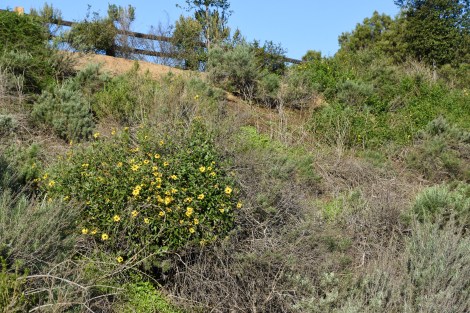
Late winter is one of my favorite times to walk around Kenneth Hahn park. The hillsides, finishing their transformation from dusty greens and browns, are full of new growth and the first of the wildflowers. California bush sunflowers (Encelia californica) are some of the first plants to start flowering. Flowers begin showing up early January. By the end of winter, big splashes of yellow are seen across the hillsides. The show is just beginning, the sunflowers continuing to bloom into early summer.

One of the magical transformation occurring is the California sagebrush (Artemisia californica). After last year’s dismal rainy season (the third driest recorded in LA), the sagebrush in the park appeared dead, piles of dry and brittle twigs. Shortly following the rains, feathery tufts of light green began appearing on the dry twigs. At first the tufts look more like epiphytes, just living on the twigs, not part of it. By late winter, most of the California sagebrushes are full, lush plants with a wonderful aroma.

Some plants even in the driest year stay green. Toyon (Heteromeles arbutifolia) can survive the harshest droughts, its leathery, dark green leaves having evolved to minimize moisture lost. But as spring approaches, tender new growth appears, light green tinged with red, offering contrast with the older darker leaves. Backlight them with the rising sun they seem to glow.

Lemonade berry bush is another tough plant keeping its leaves year around, but in Winter, its focus is on its small clusters of flowers. The tiny pink flowers are a magnet for bees, often found buzzing around the plant.

For most plants, the flowering is just beginning. In Spring, Black sage (Salvia mellifera) has a crown of flower stalks with whorls of small flowers. As Winter winds down, its flower stalks are just forming with a few tentative blooms. Another aromatic plant, Black sage has a similar smell to California sagebrush. Take time to rub your hands on the leaves of these plants to catch their heady smell.

One of my favorites that shows up in Winter is wild cucumber (Marah fabaceus), sometimes called California man root. From the same family as cucumbers, but not edible, this quick growing vine appears after the first rains and climbs up the nearest bush or tree. Wild cucumber, with it maple-shape leaves, can quickly envelop a large bush but doesn’t causes any damage. The vine is light weight and dies off before the end of Spring. The leaves quickly deteriorate. By mid-summer it is hard to find any evidence of them.
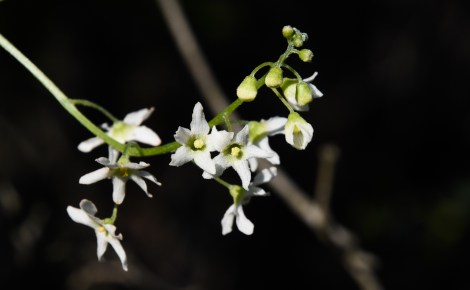
Not long after the first leaves appear, small clusters of white flowers bloom. The wild cucumber will grow hundreds of these delicate flowers. Yet this ethereal plant is more durable than it first appears. Underground is a large tuber that the vines grow from year after year. This tuber is the source of wild cucumber’s other common name, California man root, which can grow to weigh over two hundred pounds and apparently looks like a man in a fetal position.

Its seed pods are positively frightful. Looking like a medieval weapon, the spiky oval can be several inches long and contains four large seeds. As the vine dies, the pods fade to brown. Eventually the pod bursts open, releasing its seeds. Long after the leaves and most of the vine has disappear, the spiky brown pods can still be found dangling in bushes.
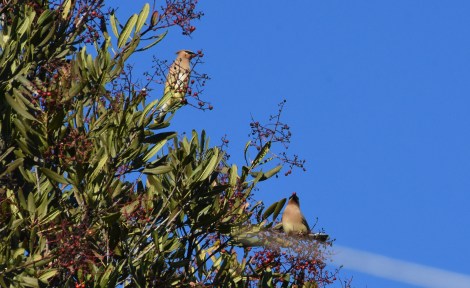
Besides plants, Kenneth Hahn is also a nice retreat for birds in a jungle of concrete. The native plants especially provide an important source of nutrition for birds. Above, two cedar waxwings (Bombycilla cedrorum) enjoy berries off a toyon, an important winter food source for birds. Native plants also support a large population of insects which provide needed protein for birds, especially when raising young.
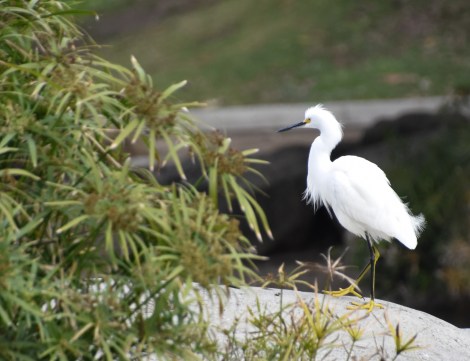
Near the main entrance to Kenneth Hahn park is the more manicured part of the park with mowed lawns, picnic tables, and playgrounds. There are also a couple of man-made ponds and a running stream. Though not a natural feature, it has become an important stop for some of the region’s water birds. Besides the domestic ducks and geese that have be released there (more likely abandon), the pond supports wild ducks. Other water birds can be seen occasionally. A snowy egret (Egretta thula), above, walks along the shore looking for food. Other egrets will visit the pond too. The snowy egret can be recognized by its more fluffy appearance and the yellow on its legs and feet.
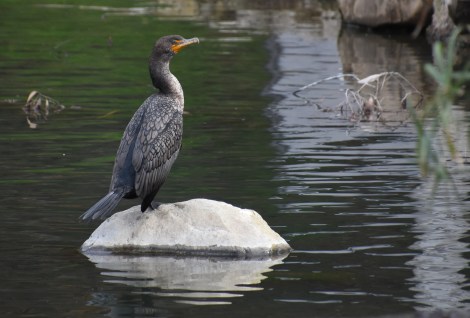
While the pond is stocked with catfish, it isn’t necessarily a good source of food for fish eating waterbirds. So the egrets, herons, and cormorants appear to be occasionally visitors to the pond not permanent residents. The double-crested cormorant (Phalacrocorax auritus) can at times be seen diving deep under water for a minute or two looking for food.

Other waterbirds only rarely appear. On one hike this February I came upon a green heron (Butorides virescens) resting on a rock in the water. They are colorful birds with a streaked cinnamon color underside and a dark blue crest on its head.
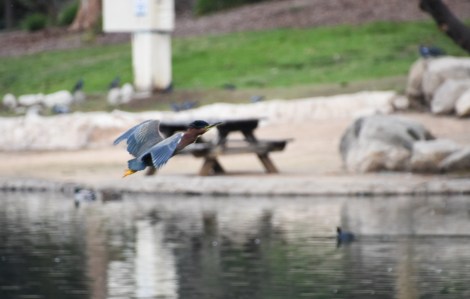
But I didn’t notice any green. As it flew away, I saw its back and wings were a dark blue. In photos I have seen there is a shimmering green color on its wings. Perhaps because the sunlight was muted by the cloudy sky the greens weren’t visible.
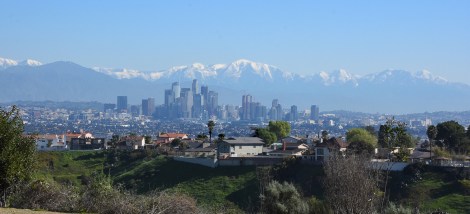
Walking up from the pond one comes to a high ridge that runs north-south through the park. The views of downtown Los Angeles can be spectacular, especially after winter rains when snow-capped peaks towering above the city.

It is up on this ridge where hawks and other birds of prey can often be seen flying or perch on a high branch scanning the area. Red-tailed hawks (Buteo jamaicensis) are the most common ones, often seen by the large grassy bowl near the ridge line. They generally hunt small mammals. The bowl, I’m sure, is a good spot for spotting gophers and squirrrels.

The eastern side of Kenneth Hahn is left in a more natural state. Several wonderful trails weave through this area. While some slopes are covered with invasive grasses and mustards, other areas hint at the wide variety of plants that once covered the Los Angeles basin. Where the trails dip down into a ravine arroyo willows (Salix lasiolepis) can appear. This time of the year their long thin branches are covered with catkins.

Catkins are long petal-less flower clusters. At this point, the willows will have few leaves on them, mostly those that hung on from last year. New ones will sprout after the catkins are pollinated. Willows are moisture loving plants so the ones in the park, where there isn’t year around water, can be scraggly looking. This wet winter will be good for them.
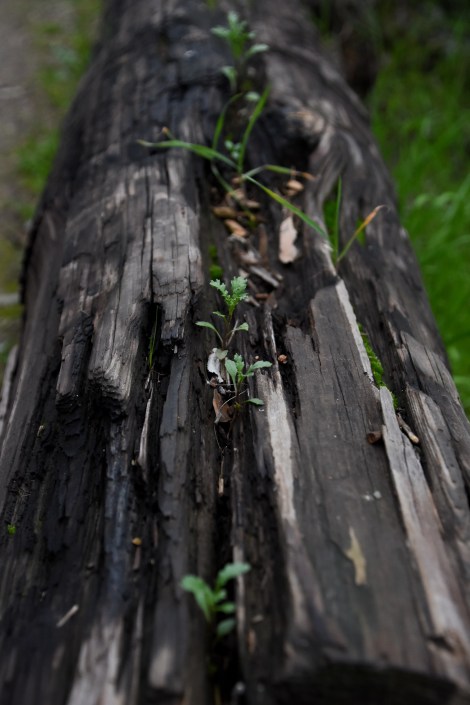
For those that have hiked in the temperant rainforests of the Pacific Northwest, it is common to find fallen logs becoming garden beds for new plants. Not a normal sight in the drier Southwest, but this Winter, a few little seedlings decided to try their luck on this old log lying by the trail. None of the seedlings are native, but then again, neither is the log.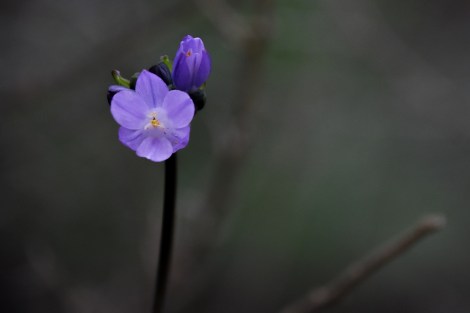
Plants like toyon or California sagebrush can be found throughout the park’s natural areas, others can appear in small, isolated patches. Blue dicks or wild hyacinth take it a step further and will appear only when conditions are right. Last year they didn’t appear, but this cool wet Winter they were a-okay with it. Blue dicks grow from a crom (like a bulb, but… different). They can stay dormant for years waiting for the right conditions. I’ve seen them only on a short patch of the trail in the park, often unnoticeable in the grass till they start blooming. Their flowers bloom, sometimes singularly or in small clusters, at the top of a stem 12 to 18 inches high. By the end of Spring they will died back to wait till conditions are just right again.

As the trail winds down the north slope of the park, another plant is found that flourishes during wet years – miner’s lettuce (Claytonia perfoliata). A large patch was growing underneath the toyon on the cooler slope. They are easily recognizable by the almost circular leaf at the top with a tiny white flower in the center. Miner’s lettuce is edible and can be used as a salad green. I picked off a leaf to try it. Not bad, a mild lettuce flavor with a slight hint of pepper. But please note, I am not a trained forager or botanist. Just because I ate something on the trail doesn’t mean you should. Nevertheless, I did not end up in to the hospital.
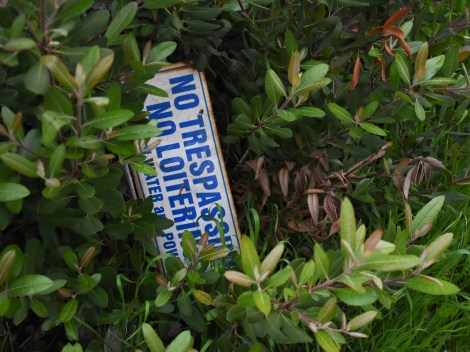
Kenneth Hahn park along with the other urban wildlands in Los Angeles are a real treasure among our congested highways, asphalt parking lots, and housing developments. To be able to wander in these areas throughout the year is a way to tune into the rhythms of the seasons that are lost in our neighborhoods where lawns and flower beds are carefully maintained to give the illusion of year around Spring.
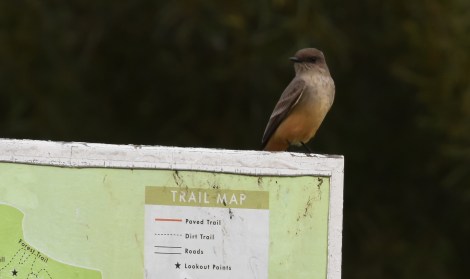
These open lands are needed in Los Angeles, a city that has one of the lowest percentage of parks of any U.S. city. For wildlife like the Say’s phoebe (Sayornis saya), these natural pockets provide food and shelter. They give us a chance to reconnect with nature and get enmeshed in a world with a clock not based seconds, minutes, or hours but on cycles of sun and moon, seasons of wet and dry, days of growth and dormancy. Just don’t expect to see it all on just one hike!
All photographs by Alan Starbuck
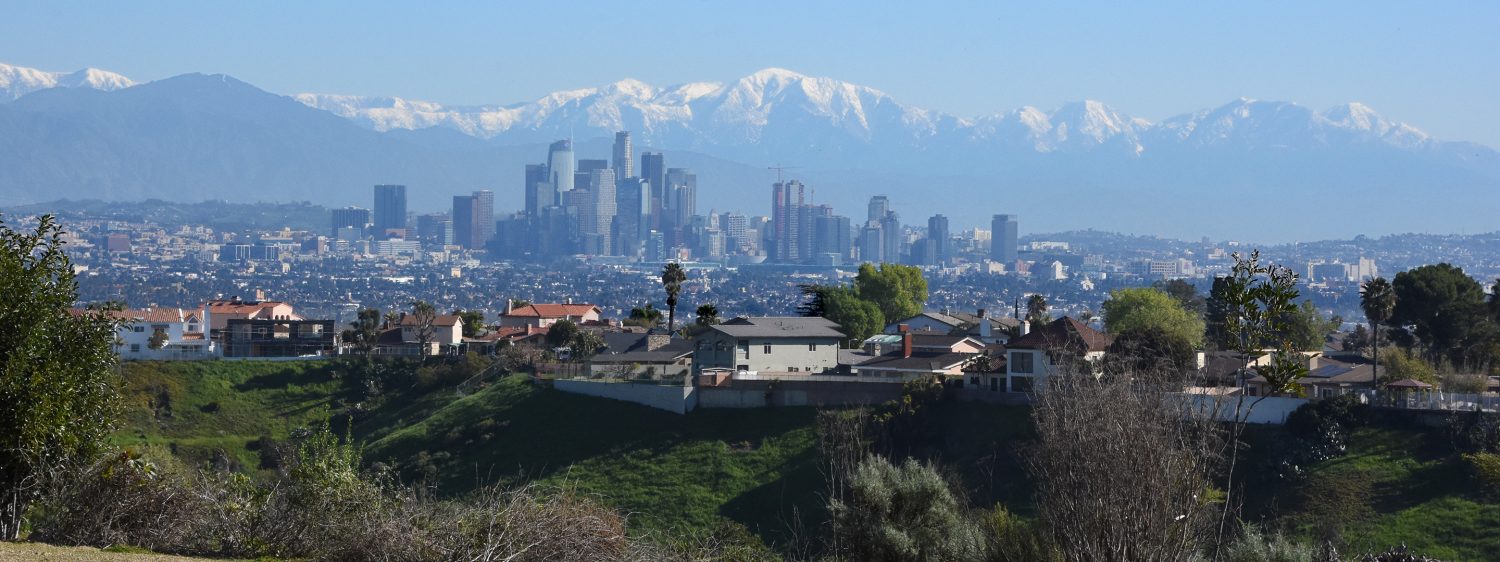
Wow. Where to start? I loved the feeling I had reading your post. It felt like a meditation – of the changing seasons, resilience of wildlife, diversity, beauty – but at the same time, I learned so much. The plants and animals you showcase are fascinating in the way they cycle and find ways to survive. I found this really lovely. Thank you so much for sharing. My reader actually suggested your site, and I’m so glad. I enjoyed your about page and love your mission. What a great find! Thank you for your message!
LikeLiked by 1 person
Thank you for your kind words. I’m glad you enjoyed it.
LikeLike
Thanks for showing us some of your backyard, we love wandering off-the-track when we visit LA and enjoy hearing of new places to see wildlife.
LikeLiked by 1 person
Thanks for the comment. It is always surprising what you can come upon exploring these little pockets of nature.
LikeLike
How beautiful. Thanks for taking the time to show our park,would love to see more info like this on Nextdoor. Having lived in the area since 1956 have seen lots of changes. Love it.
LikeLiked by 1 person
Thank you LaVelle! I’ll be sure when I write more about Kenneth Hahn or about what I find in our neighborhood to share it on Nextdoor. I’ve gotten a lot of positive feedback from sharing this post.
LikeLike
ConcreteChaparell,
Thank you so much for spending the time to write this piece accompanying your excellent photographs. Every time I walk the nearby parks, I kick myself for not educating myself more about the native species. This was meditative and informative. Keep sharing!
LikeLiked by 1 person
Thank you. It’s tough trying to remember what’s what. It wasn’t until I started gardening with native plants that I became knowledgeable enough to start recognizing plants in the wild. Still a lot to learn!
LikeLike
This was a lovely and informative read. We are also starting to garden with native plants. Thank you!
LikeLiked by 1 person
Thank you! Good luck gardening with native plants. They’re a lot of fun.
LikeLike
Oh, this so makes me miss Los Angeles, even though most of what you got pictures of grows here as well. Ironically, when I am there, the black sage there reminds me of San Jose. I remember that ridge, with South La Brea Avenue down below. Isn’t your neighborhood down there, just in front of Leimert Park? Do you happen to know GreenArt Landscape Design?
LikeLiked by 1 person
Yes, I live just east of the park and La Brea. I’m not that familiar with GreenArt, but I believe they just did a job at the entrance of my neighborhood near Crenshaw. It looks pretty good.
LikeLiked by 1 person
That sounds about right. I can not keep all the names of places straight, but I remember that they had been working near View Park (relative to another project), which would be where Crenshaw is.
LikeLike